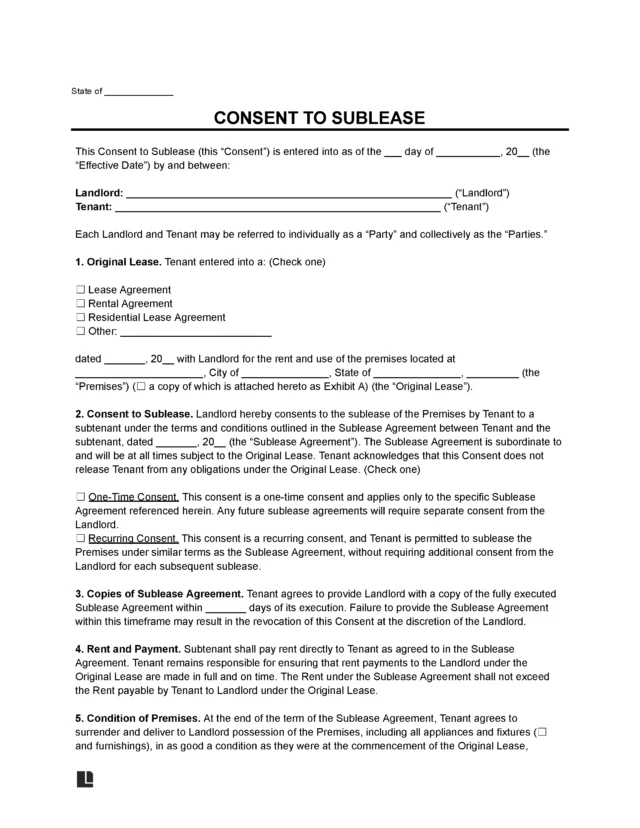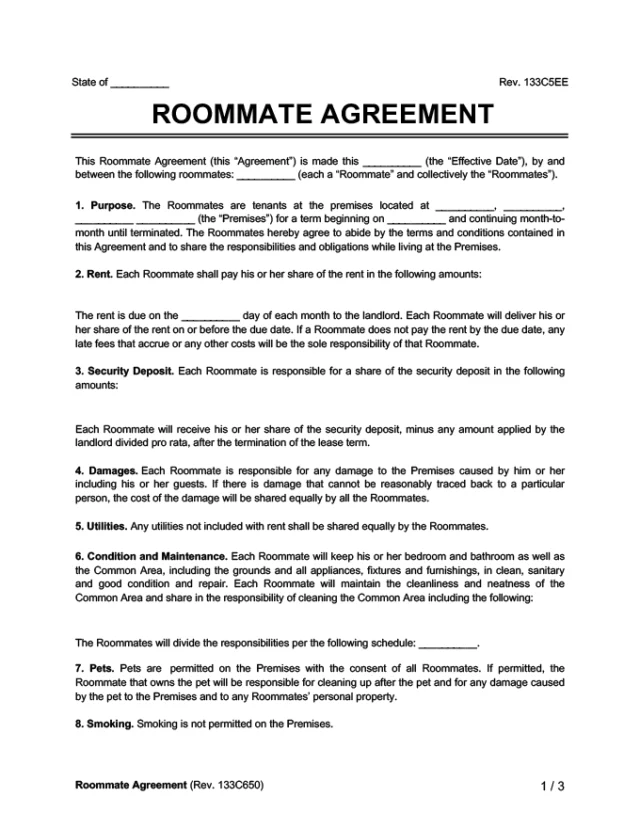What Is a Lease Assignment?
A lease assignment is a legal document that facilitates the transfer of lease rights and responsibilities from one party (the assignor) to another (the assignee). It ensures clarity, legal enforceability, and efficiency by including critical details such as lease type, property location, and information on the assignor, assignee, and landlord, along with the original lease term and transfer start date.
Obtaining landlord consent is crucial in this process. A well-crafted lease assignment template can protect all parties’ rights, streamline the process, and prevent future disputes.
Essential Clauses in a Lease Assignment
To create a comprehensive lease assignment, include these essential clauses:
- Parties Identification: List all parties involved—assignor (original tenant), assignee (new tenant), and landlord.
- Property Details: Specify the property address and relevant details.
- Effective Date: State when the assignment takes effect.
- Rights and Obligations Transfer: Outline the rights and responsibilities being transferred, including rent and maintenance.
- Landlord’s Consent: Include a clause requiring the landlord’s consent for validity.
- Assignor’s Continuing Liability: Clarify any ongoing liabilities for the assignor.
- Indemnification Provisions: Protect the landlord against potential losses from the assignment.
How to Transfer a Lease
Transferring a lease—whether residential or commercial—ensures a smooth legal transition of leasehold interest from the assignor to the assignee. The process may vary by local laws and lease terms but generally involves the following steps:
Step 1: Review the Original Lease Agreement
- Check for Clauses: Carefully read the original lease to identify any clauses related to subletting or assignment. Some leases prohibit or restrict the ability to transfer the lease.
- Understand Conditions: Note any conditions that must be met for a transfer, such as obtaining the landlord’s consent.
Step 2: Obtain Landlord Consent
- Written Request: Write to the landlord asking permission to assign the lease. Include reasons for the assignment and information about the prospective assignee.
- Landlord’s Response: Wait for the landlord’s response. Landlords can refuse to assign the lease, but some jurisdictions may require them to have a reasonable cause for denial.
Step 3: Find a Suitable Assignee
- Screen Candidates: Finding a reliable assignee for residential and commercial leases is essential. Conduct interviews and consider running credit and background checks to ensure they can meet the lease obligations.
- Negotiate Terms: Discuss the terms of the lease assignment with the assignee, including any continuing liability you might have.
Step 4: Draft a Lease Assignment Agreement
- Include Essential Information: The lease assignment should detail the responsibility transfer, including all parties’ identities, the property details, the effective date, and any specific rights and obligations being transferred.
- Landlord’s Consent: The agreement should include a clause for the landlord’s consent, which is crucial for the assignment’s validity.
Step 5: Sign the Lease Assignment Agreement
- All Parties Sign: The assignor, assignee, and landlord should all sign the lease assignment agreement to make it legally binding.
- Keep Copies: Ensure each party receives a copy of the signed agreement for their records.
Step 6: Notify Relevant Parties
- Inform Stakeholders: Notify any relevant parties, such as utility companies or service providers, about the lease transfer. This step might be more pertinent in commercial leases where services and utilities are more complex.
Step 7: Finalize the Transfer
- Transfer Security Deposits: Arrange to transfer any security deposits to the assignee, if applicable.
- Update Lease Records: The landlord may need to update lease records to reflect the new tenant’s information.
Frequently Asked Questions
Why Would a Tenant Assign Their Lease?
Tenants often opt for a lease assignment to exit their lease obligations before the term ends, especially if they face financial difficulties and the landlord does not permit subleasing. This transfer fully hands over the tenant’s lease to another party.
How Do Lease Assignments Differ From Lease Transfers?
The term “assignment” refers to the legal act of transferring property or rights from one individual to another. In contrast, “transfer” generally means arranging for ownership or control of something to be legally taken over by someone else.
Can a Landlord Refuse to Assign a Lease?
Yes, a landlord can refuse to assign a lease unless prior consent is obtained. Reviewing your lease agreement for any clauses regarding lease assignment is essential. If it’s not addressed, securing written approval from your landlord to transfer the lease to someone else is crucial.
Who is Liable in a Lease Assignment?
In a lease assignment, the assignee assumes responsibility for adhering to the lease terms, taking over the assignor’s obligations.






